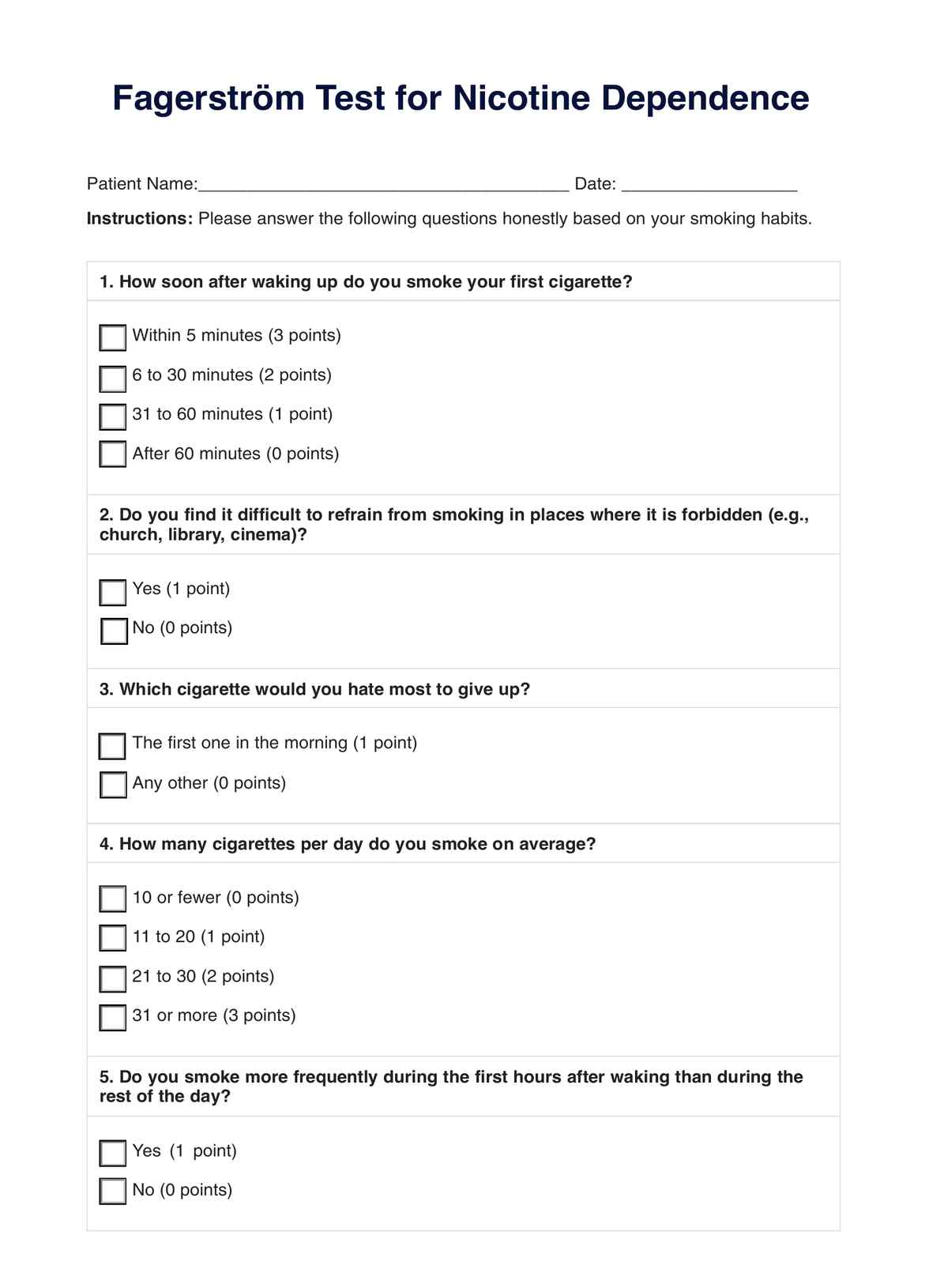The Fagerström Test is a questionnaire where individuals answer questions about their smoking habits to assess nicotine dependence. It's typically self-administered or conducted by a healthcare professional.

Fagerström Test for Nicotine Dependence
Assess nicotine dependence with the Fagerström Test: a quick, reliable tool for understanding addiction severity.
Use Template
Fagerström Test for Nicotine Dependence Template
Commonly asked questions
The Fagerström test includes questions about cigarette consumption, time to first smoking index cigarette in the morning, smoking in restricted situations, smoking when ill, craving intensity, and tobacco interference with daily activities.
The Fagerström instrument, also known as the Fagerström Test, is a standardized tool used to measure nicotine dependence in cigarette smokers.
EHR and practice management software
Get started for free
*No credit card required
Free
$0/usd
Unlimited clients
Telehealth
1GB of storage
Client portal text
Automated billing and online payments











